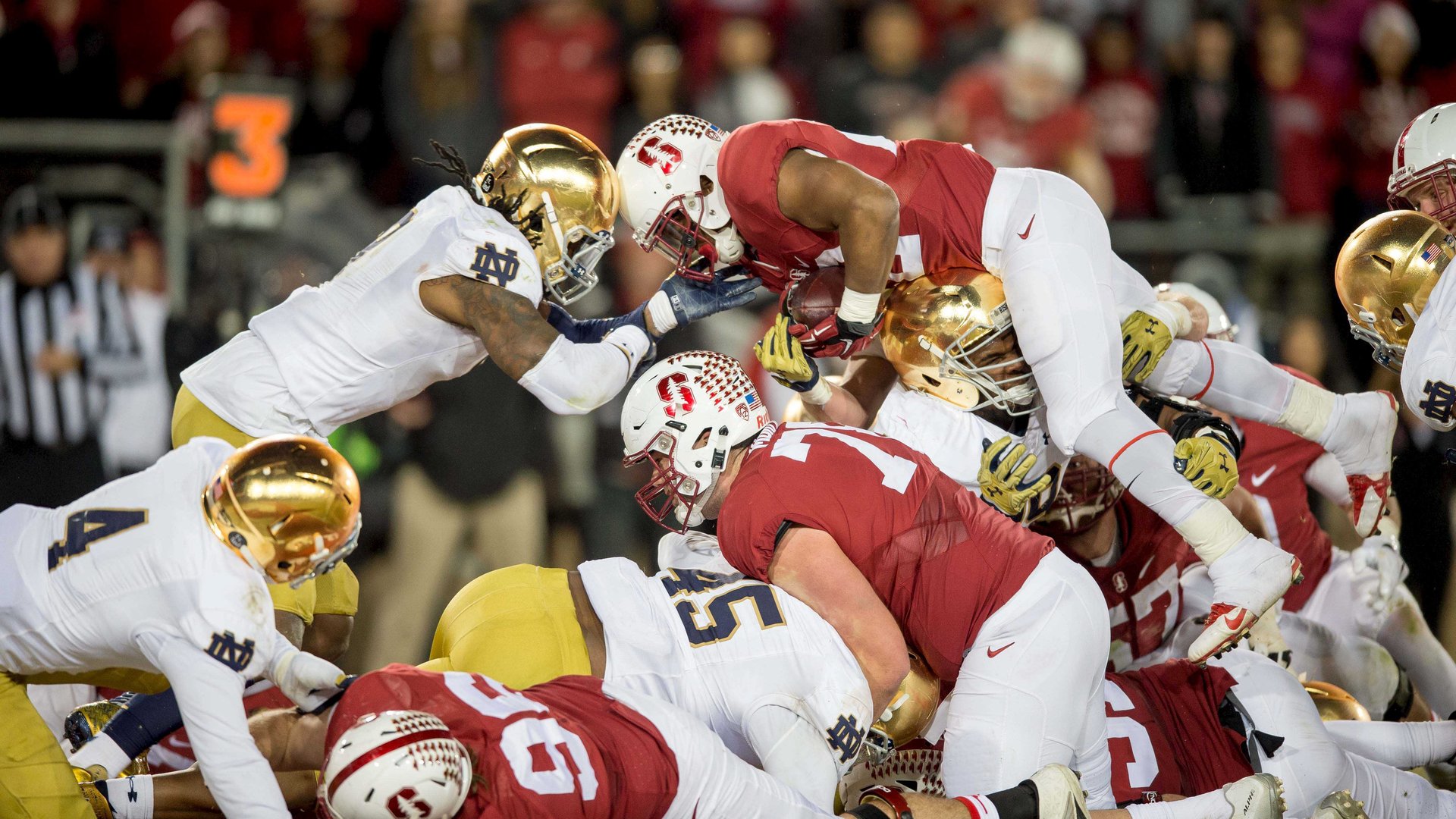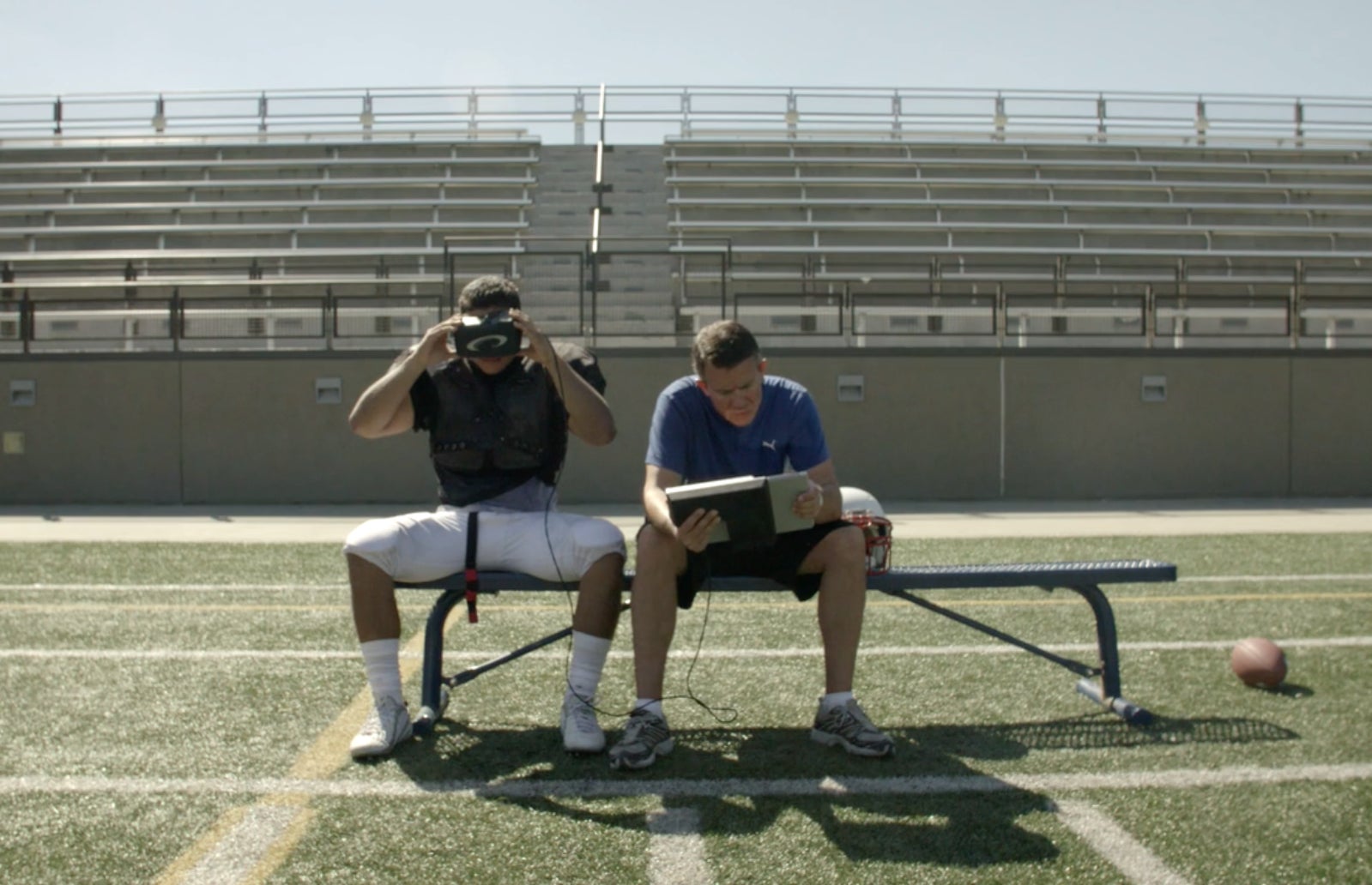These high-tech goggles can test for concussion in under a minute
Testing for concussion could soon benefit from more technological sophistication. Goggles that look like a VR headset have been designed that can test for the condition in under a minute using eye-tracking technology.


Testing for concussion could soon benefit from more technological sophistication. Goggles that look like a VR headset have been designed that can test for the condition in under a minute using eye-tracking technology.
The goggles, called Eye-Sync and made by Boston-based SyncThink, are connected to a tablet and contain infra-red cameras that track eye movements. When a user, such as a football player, wears the headset on the sidelines, a dot appears on the device’s screen. The cameras track the user’s eye movements as their vision is tested. The user’s gaze must track the dot as it reappears in different places, and then as it moves in a circle. The data is shown on the tablet so a medic can determine if the user’s gaze is tracking the dot sufficiently.

Current common methods of testing for concussion—which has reached crisis levels in American football, and could be a growing problem in rugby—are less technologically advanced. The current standardized system, the Sport Concussion Assessment Tool 3, involves asking a patient to recite a list of words, touching her nose with her index finger in quick succession, and standing on one foot, among other tests and observations.
The Eye-Sync goggles were used by the Stanford University football team last year, cutting down the time it takes to test a player for concussion from 30 to 40 minutes to a minute or less, the San Francisco Chronicle reported. It was cleared by the Food and Drug Administration at the end of January, and costs $25,000 a unit, according to Reuters. SyncThink plans to market the device to the military and professional athletes.
SyncThink isn’t the only company creating eye-tracking tools for concussion diagnostics. An eye-tracking tool to be used while watching music videos was also developed at the NYU Langone Medical Center last year for the same purposes.